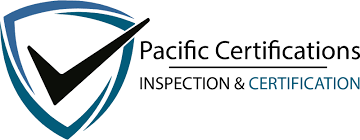What is EN ISO 16321 Certification?

EN ISO 16321-3 sets out specific performance requirements for eye and face protectors designed for occupational use. It focuses on devices intended to shield users from various hazards such as high-speed particles to harmful optical radiation encountered in workplace environments. This part of the standard is especially relevant for protectors providing protection against non-ionizing radiation and mechanical hazards ensuring workers maintain clear vision and facial safety while performing their tasks.

Industries ranging from welding and metal fabrication to construction and laboratory research rely on products meeting EN ISO 16321-3 to maintain safe working conditions without restricting the wearer’s ability to operate equipment or perform precision work. The standard ensures a defined safety level for occupational eye and face protection while maintaining comfort and usability.
To begin your EN ISO 16321-3 certification process or to speak with our audit team, contact us at support@pacificcert.com
What is Purpose of EN ISO 16321 Certification?
The aim of EN ISO 16321-3 is to reduce the risk of workplace eye and facial injuries by establishing clear, measurable performance levels for protective devices. It evaluates products based on impact resistance, optical clarity, field of vision, resistance to radiation, and durability under typical workplace stresses. While it does not replace standards for specialized or extreme hazard scenarios, it gives manufacturers and safety managers a dependable benchmark for selecting or designing PPE for tasks with identifiable risks.
By concentrating on hazard-specific protection rather than generalized safety, the standard also helps prevent misleading claims in PPE marketing and ensures that certified products deliver the level of protection stated.
What is Scope and Applicability of EN ISO 16321 Certification?
EN ISO 16321-3 applies to occupational eye and face protectors, including full-face shields, visors, and specialized lenses intended for protection against mechanical, thermal, and optical hazards. This includes:
- Eye protectors for metalworking and machining
- Face shields for welding, cutting, or grinding
- Lenses and visors designed to protect against infrared, ultraviolet, or intense visible light
- Protective gear for laboratory and chemical handling where splash and particle risks are present
The standard does not apply to devices intended for sports, recreational use, or extreme thermal environments that require higher-class protective solutions.
Clause-wise Structure of EN ISO 16321-3 Certification
| Clause | Title | Description |
| 1 | Scope | Defines application boundaries for occupational use |
| 2 | Normative References | Lists related standards for cross-referencing |
| 3 | Terms and Definitions | Explains terminology such as “optical class” and “impact grade” |
| 4 | Performance Requirements | Details criteria for impact resistance, radiation protection, and optical quality |
| 5 | Test Methods | Specifies test setups for various hazard types |
| 6 | Marking and Labelling | Outlines labeling rules for protection class, optical properties, and usage restrictions |
| 7 | Information to be Supplied | Details the instructions and product information that must be provided to users and auditors |
EN ISO 16321 Certification Requirements
Before applying for certification, manufacturers must ensure their eye and face protectors meet all specified performance criteria. Below are the key EN ISO 16321 certification requirements:

- Products must undergo impact resistance testing, simulating low-energy and high-energy particle strikes.
- Optical quality testing must confirm compliance with prescribed optical class ratings, ensuring minimal visual distortion.
- Lenses designed for radiation protection must be tested for transmission and absorption in ultraviolet, infrared, and visible light ranges.
- Resistance to ignition must be verified through exposure to small flames.
- Mechanical durability testing must include resistance to corrosion, abrasion, and thermal stress.
- Marking must clearly indicate protection class, optical class, and intended application.
- All components, including frames, visors, and mounting hardware, must meet the same protection level as the main shield.
EN ISO 16321 Certification Benefits
Gaining certification under EN ISO 16321-3 offers important benefits for manufacturers, employers, and end users. Below are the key EN ISO 16321 benefits:

- Confirms product performance through internationally recognized testing methods
- Reduces the likelihood of workplace eye and face injuries in high-risk environments
- Improves buyer and worker trust in PPE safety claims
- Supports procurement requirements in industries such as metal fabrication, energy, and heavy manufacturing
- Encourages development of protective gear that balances safety, comfort, and usability
- Helps align with national workplace safety regulations in multiple countries
The demand for certified occupational eye and face protection has grown significantly due to increased workplace safety awareness and stricter PPE procurement requirements. Many industries are moving toward multi-function protective devices that combine impact, thermal, and radiation protection in one unit.
There is also a trend toward lighter materials and improved lens coatings to prevent fogging, scratching, and glare while maintaining protection levels. With advancements in manufacturing, more products now integrate adaptive lens technologies that adjust to light conditions, offering both safety and operational convenience.
Eligibility Criteria
Any organization involved in the design, production, or distribution of occupational eye and face protectors can apply for EN ISO 16321-3 certification. There are no limitations based on company size or geographic location. However, products submitted must be intended for occupational use and be complete assemblies. Replacement parts or accessories alone are not eligible unless tested as part of the complete protective system.
EN ISO 16321 Certification Process
Pacific Certifications follows a structured process for EN ISO 16321-3 certification:
- Identify the product lines and models requiring certification.
- Prepare and submit samples for accredited laboratory testing according to the standard’s methods.
- Testing includes impact resistance, optical performance, radiation protection, and durability checks.
- Stage 1 audit – Review of test reports, product documentation, and labeling compliance.
- Stage 2 audit – Optional site audit to verify manufacturing controls and consistency in product quality.
- Final review and issuance of certification for compliant products.
EN ISO 16321 Certification Timeline
On average, certification takes between four to six weeks from initial sample submission to final approval. Timelines may vary depending on the number of product variations, testing complexity, and laboratory scheduling. If additional conditioning or design adjustments are required before retesting, the process may extend by a few more weeks.
What is the EN ISO 16321-3 Certification Cost?
The EN ISO 16321 certification cost depends on the type and number of products submitted, the range of tests required, and whether multiple protection classes are being claimed. Different lens types, visor materials, or mounting designs may require separate testing, which can influence overall costs. Combining EN ISO 16321-3 testing with other PPE-related certifications may help reduce expenses.
How can Pacific Certifications Help?
Pacific Certifications offers complete support for EN ISO 16321-3 certification, covering every step from initial assessment to final approval. Our services include:
- Guidance on sample selection and technical documentation
- Coordination with accredited laboratories for required tests
- Review of protection classes and optical ratings
- Pre-certification verification of labeling and usage instructions
- Optional site audits to verify production quality
- Integration with ISO 9001 quality management system audits for PPE manufacturers
Training and Courses
We provide specialized training programs to help manufacturers, safety officers, and quality managers meet EN ISO 16321-3 requirements:
- Lead Auditor Training: For professionals conducting in-depth reviews of eye and face protection products and production processes.
- Lead Implementer Training: For engineers and designers responsible for integrating EN ISO 16321-3 into product development.
- Internal Auditor Training: For in-house teams overseeing PPE compliance and safety performance.
Pacific Certifications provides accredited training programs. If your organization is looking for EN ISO 16321-3 training, our team is equipped to help you. Contact us at support@pacificcert.com
FAQs
- Is EN ISO 16321-3 mandatory for all occupational face shields?
No, but it is the recognized benchmark for products claiming specific protection levels against workplace hazards
- Can a product be certified under EN ISO 16321-3 and other PPE standards at the same time?
Yes, many manufacturers combine this certification with others, such as welding PPE or chemical splash protection.
- How are optical classes determined?
They are based on visual clarity tests that measure distortion, refractive power, and light transmission.
- Can EN ISO 16321-3 protect against laser hazards?
No, laser protection is covered under different standards and requires specific testing.
- Does the standard cover thermal hazards?
Yes, it includes testing against hot solids and molten metal splashes within defined limits.
- Are prescription lens protectors included?
Yes, if they are part of the occupational protective device.
- Can anti-fog coatings affect test results?
Yes, coatings must not interfere with optical clarity or degrade under testing conditions.
- Is this certification recognized internationally?
Yes, EN ISO 16321-3 is widely accepted in global PPE procurement policies.
Ready to get EN ISO 16321 certified?
Contact Pacific Certifications to begin your certification journey today!
Suggested Certifications –
Read more: Pacific Blogs






